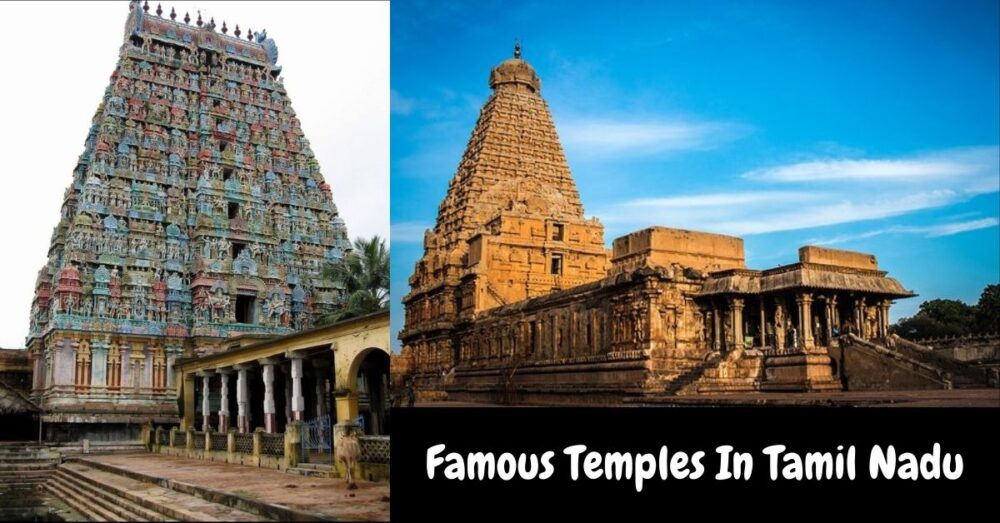Have you ever wished to travel through the shrines of our culture? If yes! then through the words of this article, you will hear the stories of the glorious past and famous temples in Tamil Nadu that you shouldn’t miss visiting if you are travelling to Tamil Nadu.
A visit to these temples stages the opulent and lavish tastes of the former royal kings, be it Pallavas, Cholas or Nayakas. Standing tall as the strength of the Tamil culture, these temples are today India’s cherished gems adding up to its rich heritage. For that reason, the temple lineage of Tamil holds a great place in the lap of history.
1. Adi Kumbeswarar Temple Kumbakonam
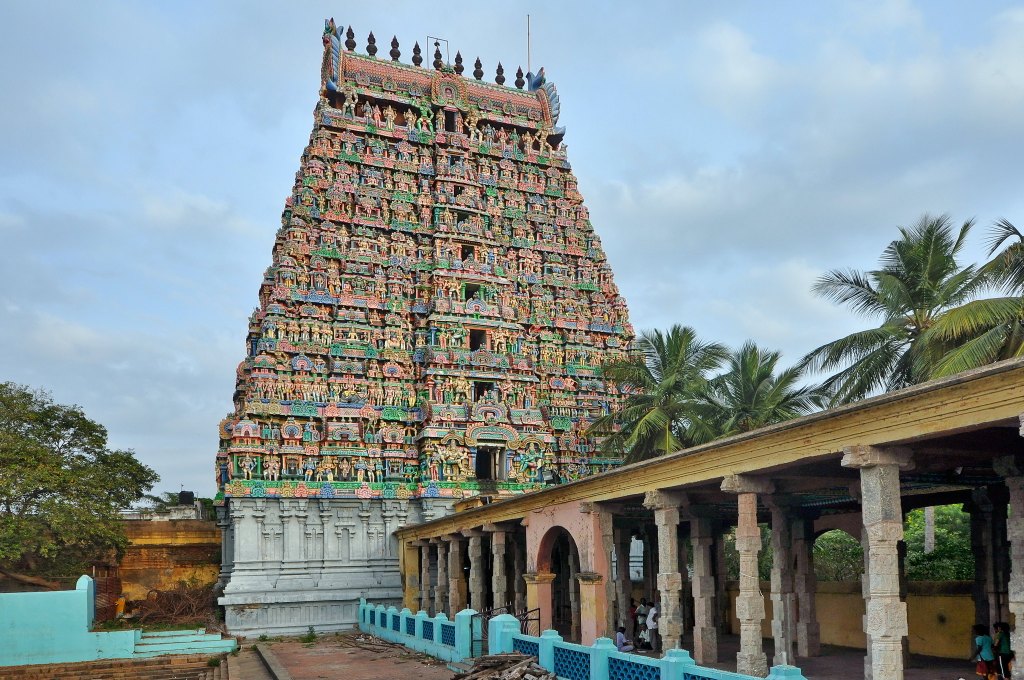
The structure is narrow towards the top with a broad base, an impeccable Dravidian style architecture which was in the 16th century remodelled by Govinda, chief of Thanjavur. This place still retains the magnificence of the Chola Dynasty.
The temple of Adi Kumbeswarar is also believed as the 26th Paadal Petra Sthalam during Chola Period. Devotees from all over the world take bath in the Potramarai tank during the Mahamaham festival which is celebrated once every 12 years (It is called as Kumbh Mela in North).
Shrines of Lord Murugan, Lord Ganesha, Lord Kiratamurati can also be seen apart from the main shrines.
The myth associated with this temple is the story of Lord Brahma and Lord Shiva. Lord Brahma enquired Lord Shiva to know from where he had to start the design of mankind. Lord Shiva proposed that sand gathered from various sacred places should be placed in a magic pot and then leave the pot in water. The pot stood in the place where the big temple of Kumbeswarar remains standing currently. Lord Shiva fired an arrow on the jar and the nectar from the pot scattered to all directions which were already mixed with sand and turn out to be a Linga. That Lingam is called Kumbeswarar.
Timings- 06:00 am – 12:30 pm, 04:00 pm – 09:30 pm
2. Brihadeeswarar Temple, Thanjavur

The stunning formation of the Chola Dynasty in the 11th century AD is one of the major temples in India, appreciating the status of a UNESCO World Heritage Site under the list of ‘Great Living Chola Temples. A lot of mythological stories are associated with the making of this temple as the tower of the temple is 216ft long (considered the tallest in the world). The apex structure (Kumbam) on the top of Vimana which weighs around 78-82 tonnes adds to the beauty of the entire structure. A question arises that how such a big heavy rock must have been embellished to a height of 216ft when there wasn’t any specific technology.
This delightful abode of Lord Shiva, ie. Brihadeeswarare Temple is situated in the Thanjavur district of Tamil Nadu that is visited by thousands of devotees and tourists around the year.
Timings- 06:00 am – 12:30 pm, 04:00 pm – 08:30 pm
3. Ramanathamswamy Temple

This structure is built during the 12th century by the Pandyas is a typical Dravidian-style temple. Other than having been one of the holy “Chardham” the temple is considered one of the 12 holy Jyotirlingas of Lord Shiva.
The temple is also recognized for housing the lengthy corridor hall in India made of almost 1000 intricately inscribed granite pillars along with a massive statue of Nandi which is 6metres big.
According to legends of mythology, the story related to the Shivling protected in the main sanctum of the temple goes back to the generations of Ramayana. It is assumed that after returning from Lanka, Lord Rama wanted to liberate his sins of assassinating the demon Ravana who was also a great Brahmin and scholar. To do so, he agreed to worship Lord Shiva and questioned Lord Hanuman to get the leading Shivling from the Himalayas. As it took very long for Hanuman to get the Shivling and see the auspicious time for prayers being run out, Rama’s wife, Goddess Sita built a Shivling from the sand.
The same Shivlinga, known as ‘Ramalinga’ is supposed to have been dwelling in the sanctum of the Ramanathaswamy Temple for spans. Enshrined next to Ramalinga is the ‘Viswalingam’, the Shivlinga that was passed by Hanuman.
As per the legends, Lord Rama seeing Hanuman disappointed, ordained that for any devotee visiting Rameswaram, the holy Yatra would be effective only if he first pays his homage to Vishwalinga and since then, all the practices are initially put up at Viswalingam and then at Ramalinga.
Timings- 5:00 am to 1:00 pm and 3:00 pm to 9:00 pm
4. Jambukeswarar Temple, Thiruvanaikaval
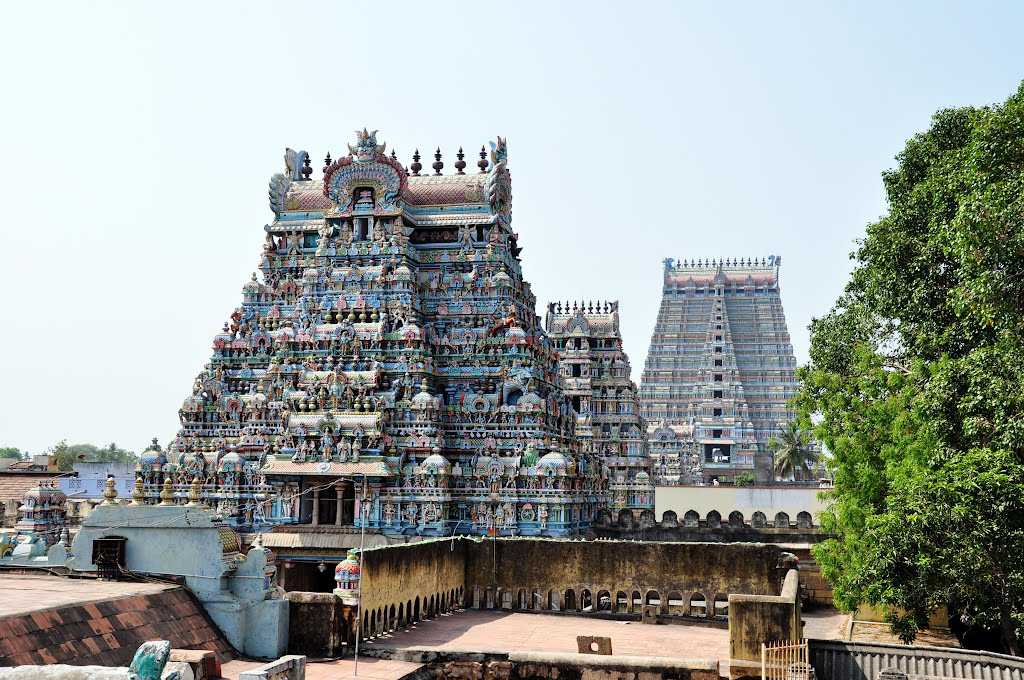
This temple is dedicated to Lord Shiva, built during the Chola period this structure is an excellent example of Dravidian style architecture. Grandeur and royalty of Chola kings have been carved on the 7-tiered Gopuram. An astonishing fact is that an underground stream flows under the Shivling from which water is continuously flowing out.
Presenting the sacrament of Parvati as Akilandeswari deifying Lord Shiva, every day throughout noon, the priest of the temple dresses as a female dressed in saree and offers prayer to Lord Jambukeswarar. This noon prayer is joined by hundreds of believers every day and delivers great insight into a few strange Indian traditions and customs to those travelling around to India for the first time.
Mythological storey attached to this temple is Goddess Parvati in the form of Akilandeswari performed a great penance under the ‘Jambu Tree’ that is believed to have grown from the head of a meditating saint. To act the Pooja, she created a lingam from the water of River Cauvery flowing by. Spellbound by the devotion of Parvati, Shiva gave her darshans and taught her Shiva Gnana.
Timings- 06:00 am – 01:00 pm and 04:00 – 09:30 pm
5. Sri Rajagopala Swamy Temple
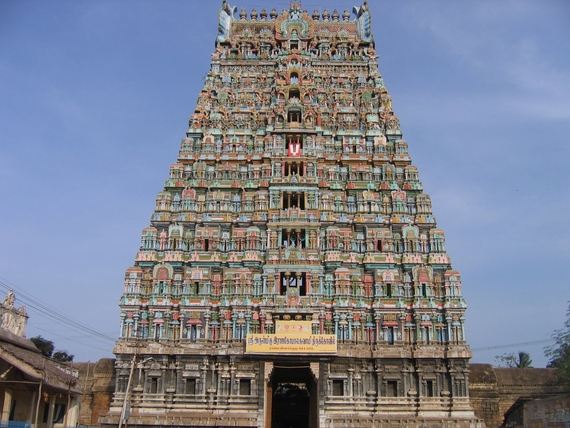
Also known by the name of “Guruvayoor” by Hindus. It is famous for one of the most popular shrines of Lord Krishna. This temple is an example of a Vaishnavite temple form in India.
Temple showcases 32 different forms of Lord Krishna and according to the history of the temple, Lord Krishna gave darshan in 32 forms to Paravasudeva and Raja Gopalan.
According to the mythological story, Lord Krishna killed a wild elephant named Kuvalaya Peetam who was Kansa (Lord Krishna’s maternal Uncle). He wanted to kill Lord Krishna’s elder brother Balrama in the form of an elephant but before that Lord Krishna killed the wild elephant and held one enlarged tusk in his left hand.
6. Kapaleeshwarar Temple
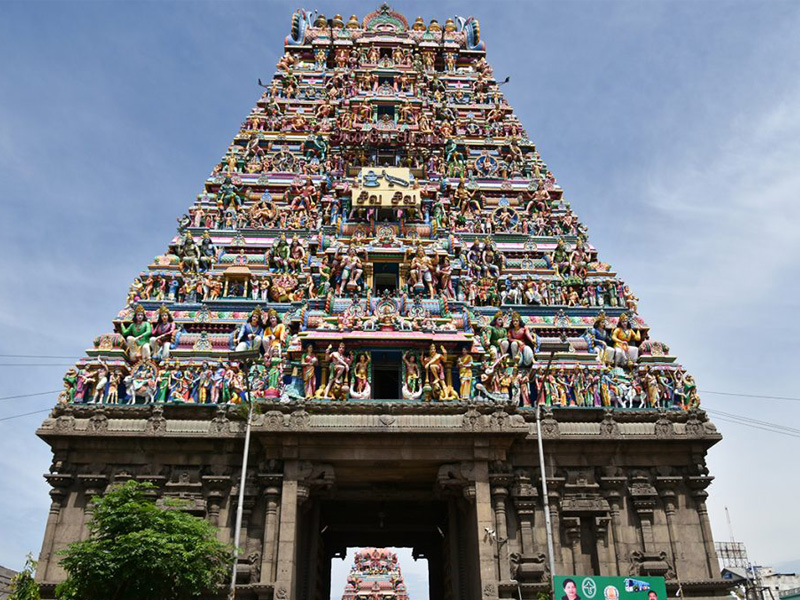
Temple dates to the 16th century, temple’s splendour was brought back by Kings of Vijayanagara as it was devasted by the Portuguese. Kapaleeshwarar is a form of Lord Shiva.
The structure could be seen with huge rainbow-coloured Gopuram and a water body. It is a true example of a Dravidian style of Architecture.
As per the mythological tales, Goddess Parvati in the ‘avatar’ of peahen or ‘Mayil’ as said in Tamil, presented a huge sacrament for Lord Shiva at this saintly site. That is the explanation, a small shrine of Goddess Parvati who is revered here in the shape of Karpagambal is also present in the temple complex beside the main sanctum of Lord Shiva who is enshrined in the form of Shivling.
The Karpagambal shrine fascinates several people on Fridays when the governing deity is bedecked with a garland of gold coins. Another interesting place of the temple is a small shrine beneath the old Punnai Tree in the courtyard that portrays the narrative of Goddess Parvati in the way of a peahen adoring the Shivling.
7. Srivilliputhur Andal Temple
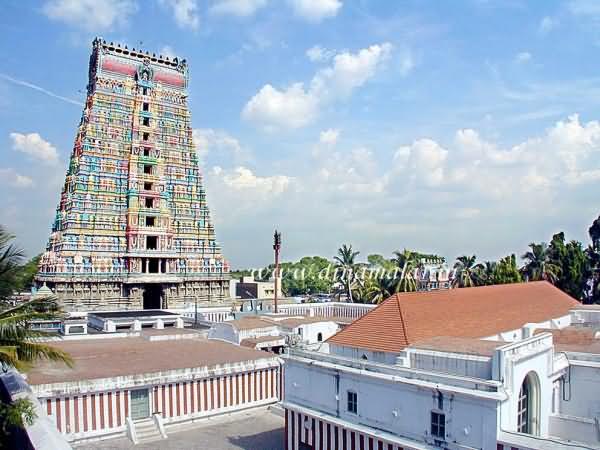
In the entire Tamil Nadu, this temple has the biggest Gopuram which is also utilised by Tamil Nadu Govt as its emblem. Lord Vishnu gave darshan to king Villi in this daydream and demanded him to construct a dedicated temple, so this structure dates to the 8th century BC. Other than the shrine of Lord Vishnu Srivilliputhur Andal is also associated with two saints Periyalwar and Andal.
According to the story Andal who is an incarnation of Goddess Earth – Bhoodevi, was 5 years old was found in the temple garden Nandanavanam of Periyalwar. As he had no children of his own, he embraced Andal. Once Andal wore the garland in the dearth of Periyalwar aimed for Lord Vadabadrasayee and then switched the garland in the flower basket.
Periyalwar, oblivious of this, extended the garland to Lord Vadabadrasayee. This lasted for a certain period. One day Periyalwar spotted Andal and was particularly disappointed by watching her doing this disrespectful act. At that very night, Lord Vadabadrasayee showed in Periyalwar’s dreams and told he would only allow Andal’s garland. Since then, the garland adorned by Andal is offered to Lord Vadabadrasayee.
Timings – 04:00 am -01:00 pm and 04:00 pm – 08:00 pm

